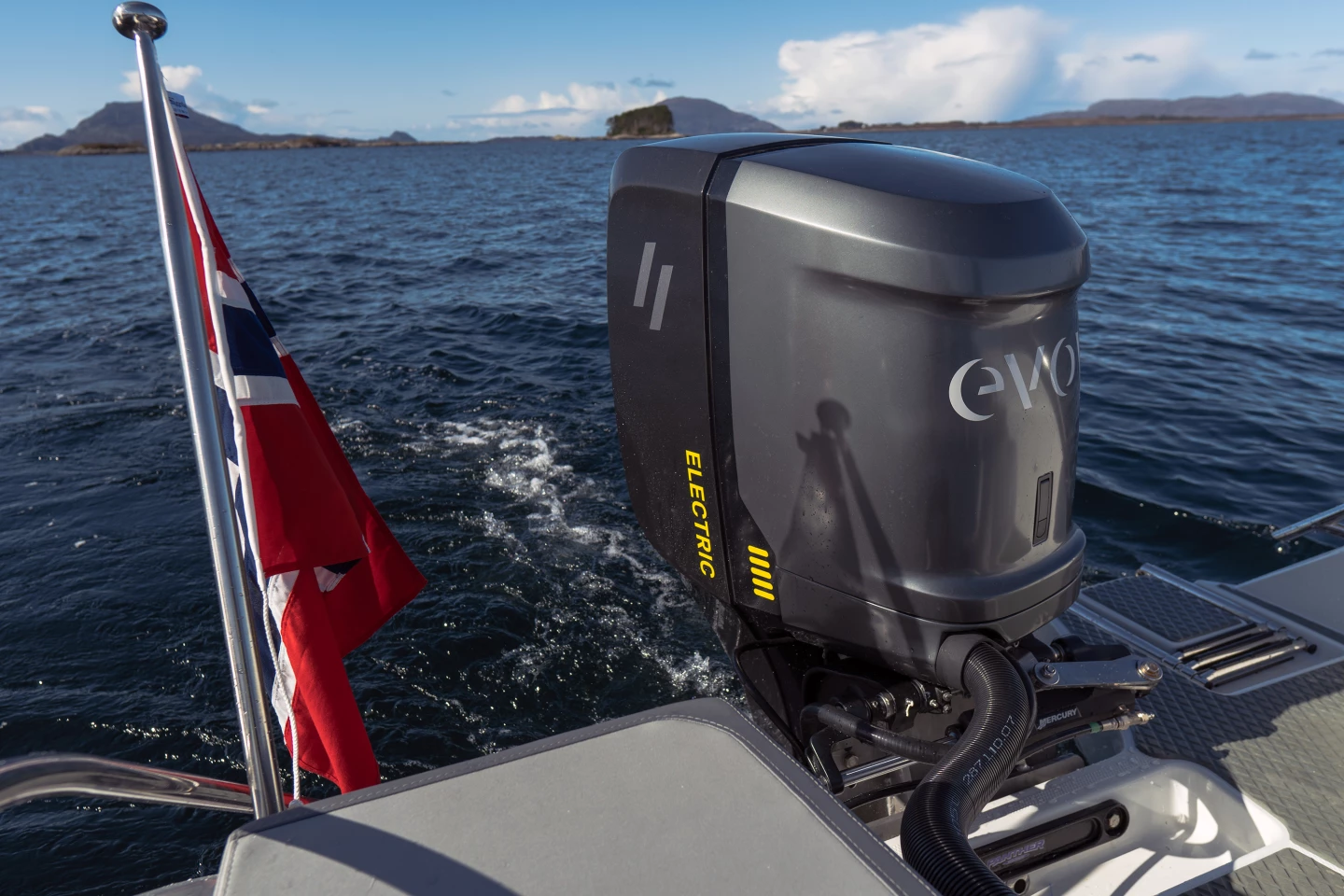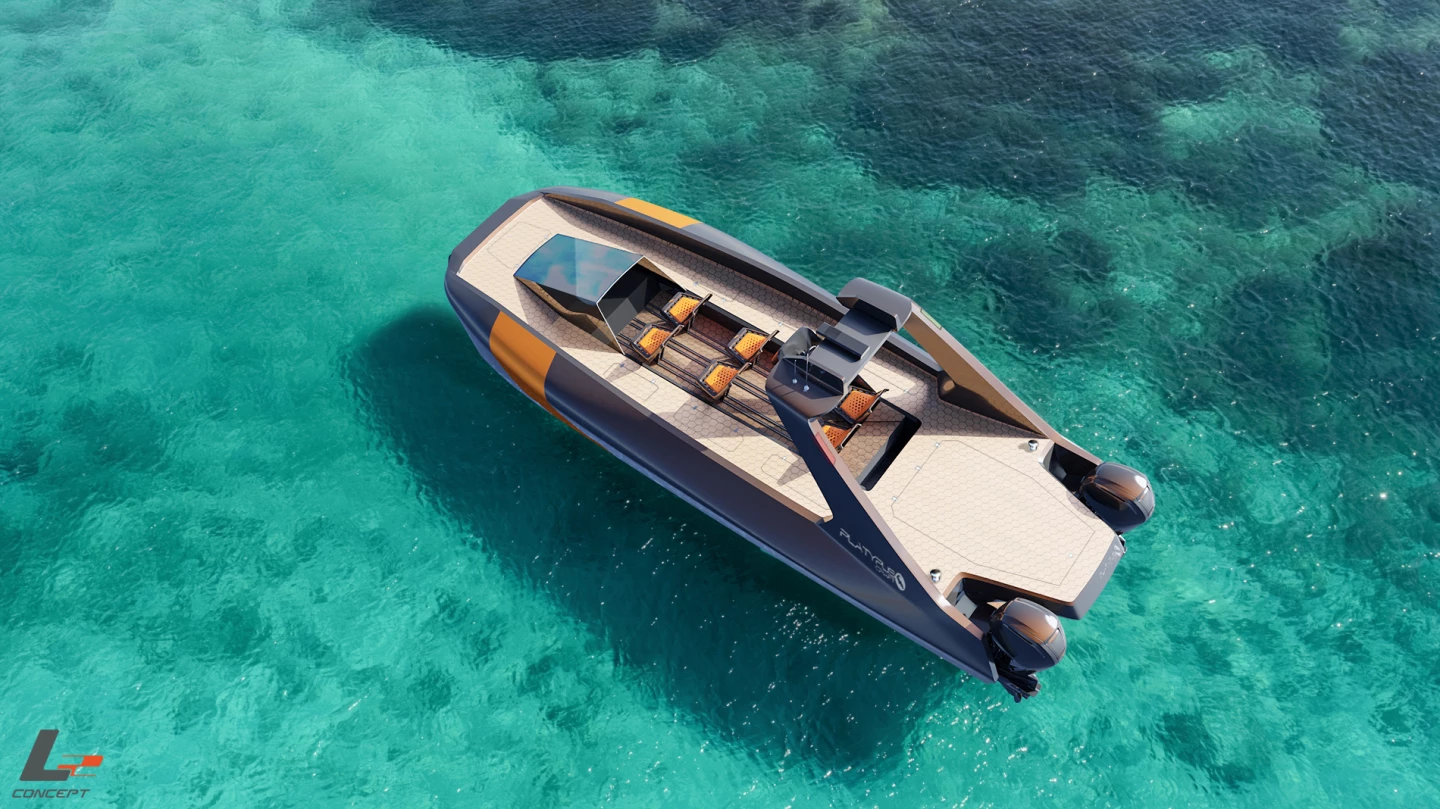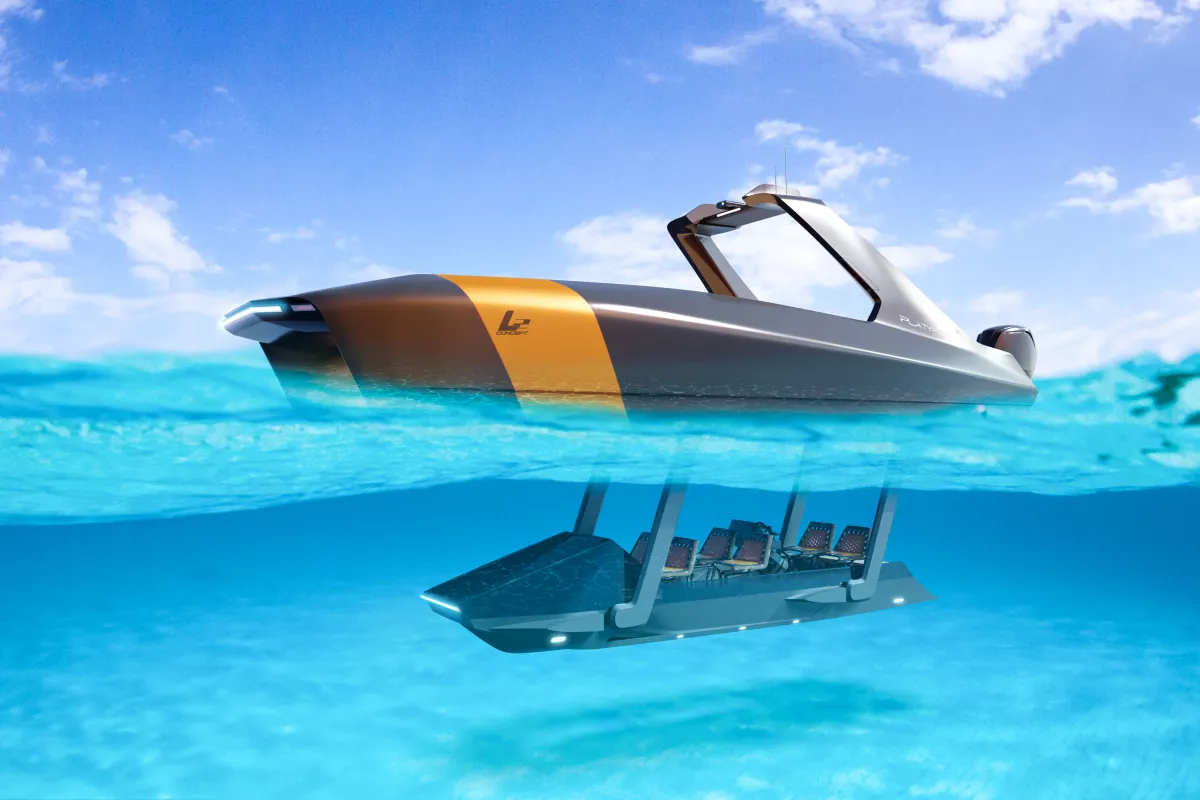A remarkable semi-submersible ecotourism concept that takes passengers above and below the water has just received a zero-emission boost thanks to a new partnership between Platypus Craft and electric outboard manufacturer Evoy.
The road to production – or in this case river – can be a long one, particularly for small companies like Platypus Craft. The French outfit's François-Alexandre Bertrand first shared plans for a brand new kind of marine exploration craft more than a decade ago.
Like its namesake, the Platypus would spend time splashing around above water and below. The two-seat vessel could cruise to a particularly interesting spot off a tropical coast and then lower its mid-section under the surface to allow pilot and passenger – seated motorcycle-style – to explore relatively shallow waters without needing to don cumbersome tanks.
The design means that underwater adventurers wouldn't necessarily need diving experience or training, as an onboard compressor would supply air to special facemasks via retractable hoses. Naturally, diving gear could be stowed onboard too, allowing folks to venture away from the underwater pod if they so desired.

The original concept from Bertrand was subsequently padded out by naval architect Philippe Roulin, with plans calling for the whole shebang to run on battery electric power.
Spin on a couple of years, and Bertrand built a working prototype measuring 5.7 m (18.7 ft) in length and 2.46 m (8 ft) wide. A pair of Torqeedo outboards had also been factored in, along with a 10-kW battery – through Mercury combustion versions were to be offered as an option.
By the time I caught up with the charismatic ideas man for a tête-à-tête near St Tropez on the French Mediterranean coast in 2016, the electric powertrain had been sacrificed for more powerful Mercury engines in order to prove the concept in choppier waters than electric outboards could manage at that time.

I was there for the unveiling of new designs for the production model, but couldn't resist the temptation to try out the existing prototype. Bertrand himself took me out to deeper waters, piloting above the waves as I sat behind on the padded seat and took in the sights while faking a smile through surprisingly choppy conditions.
We soon came to a stop and strapped on the modified Ocean Reef full facemasks ahead of being lowered beneath the surface by hydraulic arms to take a spin around a much calmer world below. We did have to undergo a brief restart though as my then much shorter beard prevented a tight seal and seawater had started pushing its way through the edges of the mask. Then we again dipped down below for an all-too-brief exploration of the seabed and marine life in the coastal waters off Ramatuelle.
"I reckon I spent less than five submerged minutes, but they were the most enjoyable moments I've ever spent on assignment for Gizmag [as we were called back then]," I noted at the time. "The experience was magical." Even the pumped air having a somewhat sour edge to it – caused by the air pumps close proximity to the hydraulic system – didn't spoil my wonder at the experience.
From this brief demo I could easily envision the Platypus being very popular at sun-kissed island tourist spots, offering water babies a dive-like adventure without having to undertake lessons or strap on unwieldy gear. With electric drive powering the experience, the dual-mode vessel lends itself nicely to marine research or more casual wildlife observation, as well as myriad other applications off the coast, on (and under) lakes and deeper stretches of river networks.

For the next couple of years, Bertrand and crew worked on bringing the slick new design to life. By 2019, the first production version was sold to New Caledonian tour operator Seascape. The order books were officially opened for the five-person Blue Ocean edition too – which was offered with two 50-hp Mercury outboards or 10-kW twins matched to a 20-kWh battery bank.
Fresh ideas continued to pour out, resulting in 2020's Swordfish recreational tender. The main difference with this iteration and its predecessors was that the central pod was enclosed rather than open, allowing up to seven subsea tourists to explore aquatic environments in air-conditioned comfort.
Bertrand recently revealed to us that this version was specifically designed for a customer in the UAE, who eventually canceled the order so it never made into production – though Platypus Craft would get to work if a customer managed to stump up the "close to €6 million" build price.

Earlier this month the company signed a Memorandum of Understanding with Norwegian electric outboard maker Evoy to employ two of its 120-hp Breeze drive systems on an upcoming Yacht Edition semi-submersible tourist craft.
This is to be based on the ever-evolving Blue Ocean design. Since our 2019 coverage of this version, tweaks and updates have been regular. Bertrand revealed to us that the components have been upgraded. A new waterproof dashboard has been added (which includes a digital periscope and GPS positioning). The front-most passenger is now treated to an open cockpit that affords some shielding from "surface elements and hydrodynamic eddies in underwater mode." Environmental monitoring systems have also been added. The electronically monitored hydraulics have been made more robust, and the electric power system has been boosted to 24 V.
Blue Ocean trimarans have completed more than 400 km (347.5 nautical miles) of underwater exploration in the last five years, and have been involved in a number of Blue Odyssey environmental missions – including one in France and another in Corsica (see videos below).
The addition of the Evoy marine drive system would see this flavor of Platypus manage a cruise speed of 15 knots (17 mph) above the water – though could zip up to 25 knots (~29 mph) if needed. With the passenger pod lowered, that speed is cut to 3-5 knots (3.4 - 5.7 mph) for safer underwater maneuvering. The onboard battery pack is reckoned good for between 30 and 80 nautical miles of range per charge.
As well as providing zero-emission boating, the partnership points to other eco benefits of the electric drive, including the lack of pollution from fuel spills and bilge water that are associated with combustion powertrains, along with the quieter nature of electric boats for reduced disturbance while watching marine life.

"Our partnership will enable enthusiasts to explore the wonders of the aquatic world without leaving a footprint, fostering a deeper connection between humanity and marine life," said Bertrand.
"By combining Evoy's powerful electric motor systems and Platypus Craft's innovative concept, it’s possible to explore nature without impacting it," added Evoy co-founder and CEO, Leif Stavøstrand. "Together, we will create unforgettable and environmentally friendly experiences."
The Evoy-powered model could launch as soon as 2025, though we don't yet know what the expected price will be for marine ecotourism operators. An aluminum-framed Yacht Edition configuration prior to the announcement was listed at starting from €450,000 (which converts to around US$490,000). This version can seat 11 onboard, though only five at a time would be lowered on the central pod (which features a transparent polycarbonate bottom for improved viewing).
Sources: Platypus Craft, Evoy











